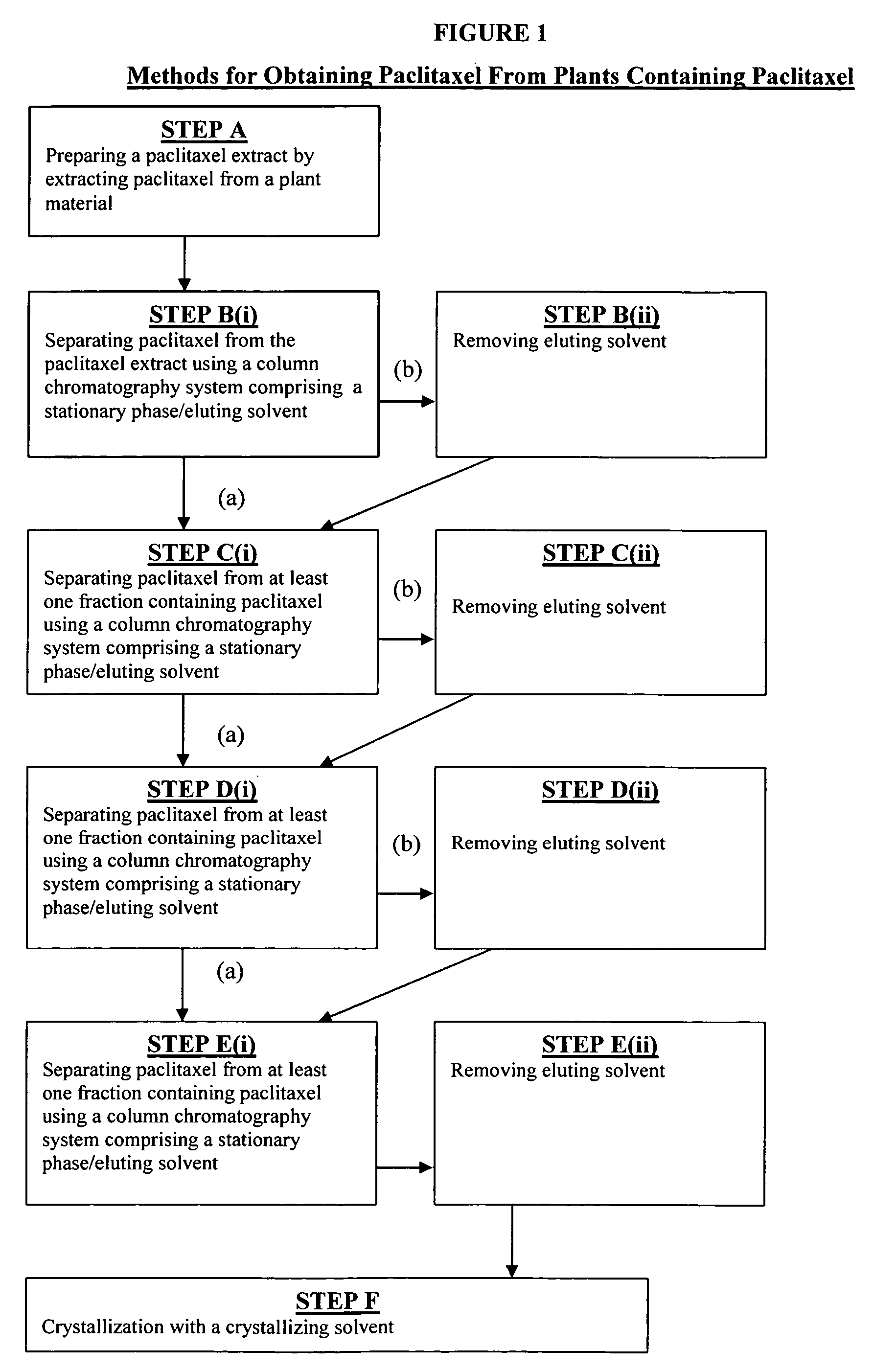Methods for obtaining paclitaxel from taxus plants
a technology of paclitaxel and taxus, which is applied in the field of methods for obtaining paclitaxel from taxus plants, can solve the problems affecting the quality and yield of paclitaxel isolated, and achieve the effects of enhancing the stability of paclitaxel, high purity paclitaxel, and maximum recovery of paclitaxel presen
- Summary
- Abstract
- Description
- Claims
- Application Information
AI Technical Summary
Benefits of technology
Problems solved by technology
Method used
Image
Examples
example 1
[0026] One ton of dried and ground plant material obtained from the T. media Hicksii composed of about 500 kg roots and about 500 kg leaves and twigs was extracted at room temperature with 15,000 L of 50% aqueous acetone. The extract was concentrated under vacuum to about 300 L. Then, 150 L of methanol was added and five extractions with 200 L of dichloromethane were carried out. The pooled organic layers were concentrated under vacuum until a soft residue was obtained, which was redissolved in dichloromethane and column chromatographed over 180 kg of silica gel. About 2,700 L of dichloromethane were eluted through the column and discarded.
[0027] Paclitaxel was then eluted with a mixture of dichloromethane-methanol 99:1 (v / v). The solution was then evaporated under vacuum in order to obtain a soft residue. The residue was dissolved in 8 L of acetone to obtain an acetone-residue which was passed through a column containing 30 kg of neutral alumina, eluting with the same solvent. Fra...
example 2
[0030] One hundred kilograms of dried and ground plant material from Taxus media dark green spreader whole plant composed of about 40 kg roots and about 60 kg leaves and twigs were extracted at room temperature with 1,500 L of 50% aqueous acetone. The extract was concentrated under vacuum to 30 L. Then, 15 L of methanol was added and five extractions with 20 L of dichloromethane were carried out. The dichloromethane extracts were pooled and concentrated under vacuum to 15 L.
[0031] Methanol (150 ml) was added and the solution was passed through a column containing 13 kg of neutral alumina eluting with dichloromethane-methanol 99:1 v / v. Fractions containing paclitaxel were collected and concentrated under vacuum to 5 L.
[0032] The concentrated solution was charged on a column containing 9 kg of silica gel and eluted with dichloromethane-methanol 99:1 v / v. After the elution of polar impurities, 220 L of fractions containing paclitaxel were collected, pooled and evaporated under vacuum...
PUM
| Property | Measurement | Unit |
|---|---|---|
| diameter | aaaaa | aaaaa |
| volume percent | aaaaa | aaaaa |
| volume percent | aaaaa | aaaaa |
Abstract
Description
Claims
Application Information
 Login to View More
Login to View More - R&D
- Intellectual Property
- Life Sciences
- Materials
- Tech Scout
- Unparalleled Data Quality
- Higher Quality Content
- 60% Fewer Hallucinations
Browse by: Latest US Patents, China's latest patents, Technical Efficacy Thesaurus, Application Domain, Technology Topic, Popular Technical Reports.
© 2025 PatSnap. All rights reserved.Legal|Privacy policy|Modern Slavery Act Transparency Statement|Sitemap|About US| Contact US: help@patsnap.com

